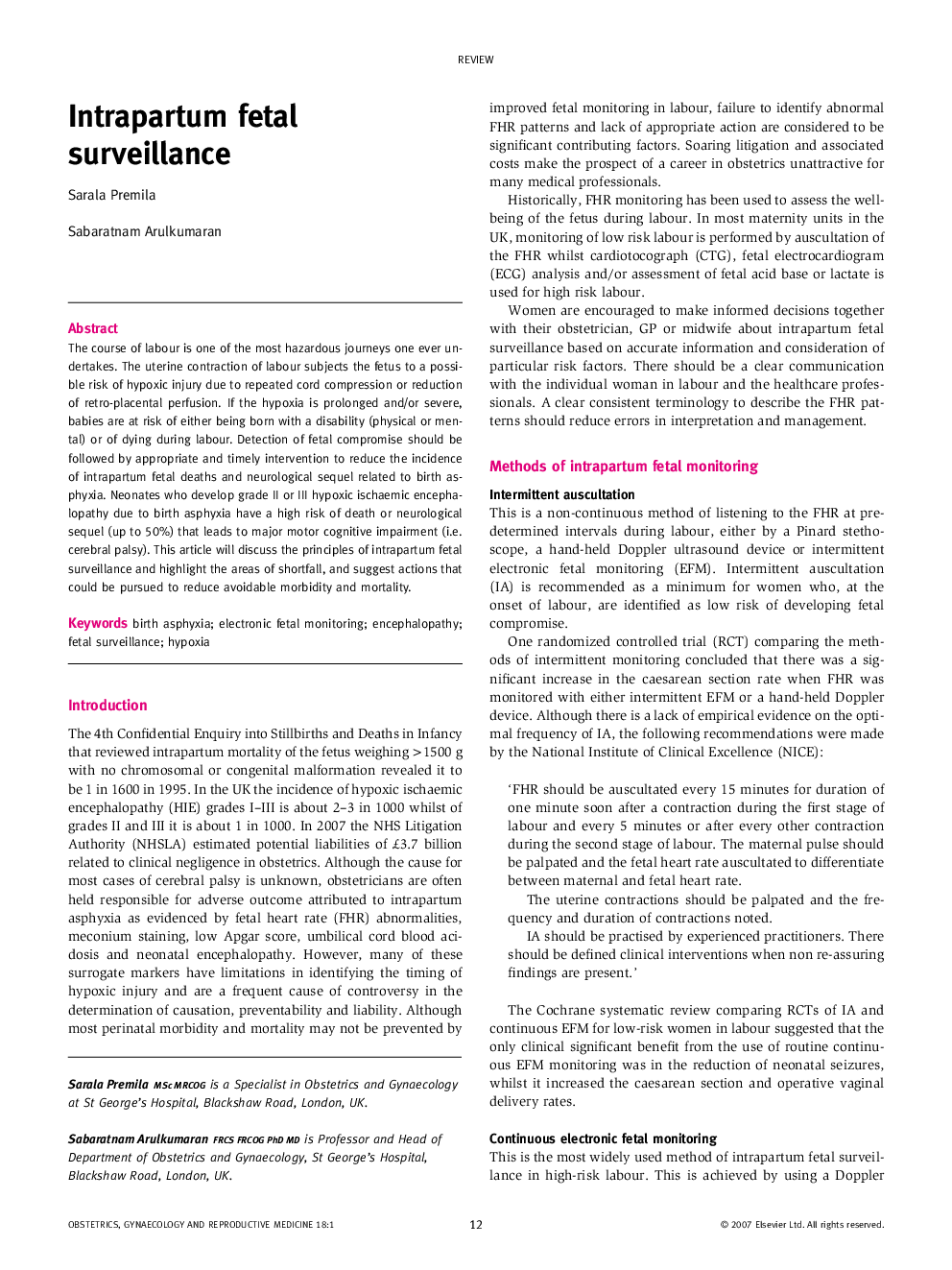| Article ID | Journal | Published Year | Pages | File Type |
|---|---|---|---|---|
| 3967528 | Obstetrics, Gynaecology & Reproductive Medicine | 2008 | 6 Pages |
The course of labour is one of the most hazardous journeys one ever undertakes. The uterine contraction of labour subjects the fetus to a possible risk of hypoxic injury due to repeated cord compression or reduction of retro-placental perfusion. If the hypoxia is prolonged and/or severe, babies are at risk of either being born with a disability (physical or mental) or of dying during labour. Detection of fetal compromise should be followed by appropriate and timely intervention to reduce the incidence of intrapartum fetal deaths and neurological sequel related to birth asphyxia. Neonates who develop grade II or III hypoxic ischaemic encephalopathy due to birth asphyxia have a high risk of death or neurological sequel (up to 50%) that leads to major motor cognitive impairment (i.e. cerebral palsy). This article will discuss the principles of intrapartum fetal surveillance and highlight the areas of shortfall, and suggest actions that could be pursued to reduce avoidable morbidity and mortality.
